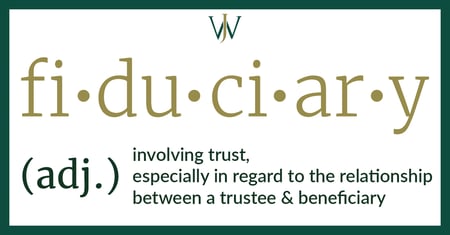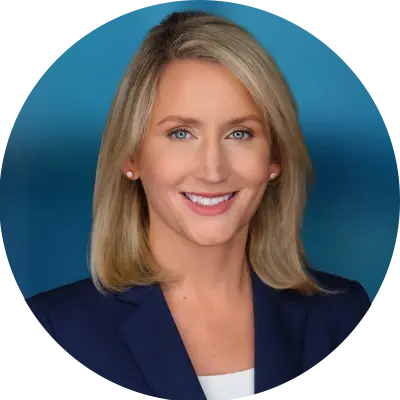For Chevron executives utilizing the investment options within the Employee Savings Investment Plan 401(K) (ESIP) or the Deferred Compensation Plan (DCP), changes are coming to the list of investment options available. These updates take effect on June 1st, 2023, and could substantially impact your retirement savings if no action is taken beforehand.
What Changes are Occurring in the Chevron 401(K), the Employee Savings Investment Plan (ESIP)?
Starting in June, there are some significant changes to the way you can invest within the ESIP, namely:
- Current investment fund options will be remapped to new fund options
Prior to this year, the Chevron ESIP and DCP featured several fund options for employees to select from within their accounts. As of June 2023, these options will be significantly narrowed down. Notably, Chevron is remapping all the Vanguard index funds within the plans to alternatives from BlackRock and other investment managers and adding an EARNEST Partners Smid Cap Core fund. Additionally, the expense ratios, or "fees," for these newer choices differ from many of those in the current investment choices._Chevron_Blog_2023_5_1600_900_ESIP%20Changes.png?width=600&height=338&name=Chevron%20401(k)_Chevron_Blog_2023_5_1600_900_ESIP%20Changes.png)
Who Is Impacted By These Changes in Investment Options?
For most Chevron executives, these changes will execute within their 401(K) automatically, so no action is necessary. However, doing your due diligence and understanding the differences between funds and what these changes mean for you is crucial.
For example, within the new investment options is a fund called the EARNEST Partners Smid Cap Core. This fund offers exposure to both small and mid-size companies and is under active and tactile management. For those who are more comfortable with an equity-forward portfolio and increased exposure to smaller companies, the EARNEST fund could be a great investment opportunity in their 401(K).
However, you should understand your risk tolerance, your goals, and how to set up your ESIP's asset allocation before making any investment decisions. At Willis Johnson & Associates, we're working with our Chevron clients to ensure they can maintain their desired asset allocations within their accounts that will help them reach their long-term goals.
How Will These Investment Option Changes Impact Chevron Employees?
If you currently have a 401(k) with Chevron, many of your current investment selections in it may no longer be available to you once this remapping takes effect.
Differences in BrokerageLink & Core Plan Investment Options
Any investments within the Core plan of your ESIP are subject to the new investment options. However, any investments you make in the BrokerageLink side of your 401(K) will not be affected by this new remapping.
Changes in Asset Allocation from Switching to The New Funds
Something to take a closer look at is the weight of various asset subclasses within each of the new funds in comparison to how your 401(K) is currently invested. While at a glance, many of the new funds seem to differ primarily by offering lower fees, they could also offer a substantially different asset allocation than what your goals require. For example, if you've been invested in the Vanguard REIT index previously, the newer Principal Diversified Real Asset fund is a mixed basket of various alternative investments instead, not just real estate. The newer PDRDX fund offers more diversification. If your investment strategy and goals significantly rely on equities or similar investments, the new Principal Diversified Real Asset fund may expose you to more fixed income than your desired asset allocation. Taking a look at the portfolio characteristics of the new investment options can help you better understand the impending changes as an informed investor.
What You MUST Do To Protect Your Investments for Retirement
As of June 1st, any investments in the ESIP core plan that align with the current remapping options will be auto-invested into the new funds. Before your funds drop into these new indexes, it's important to evaluate the following investment considerations and think about making the appropriate adjustments within your plan:
- Look at Expense Ratios:
Many, but not all, of the new funds' expense ratios are lower than what you may have invested in previously within the ESIP. Make sure you're comfortable with and aware of any changes in your new investments' fees. - Consider Diversification Across Funds: Before the remapping in the ESIP, Chevron employees could diversify their investments across their choice of 15 funds. With the new options, there are only 11, including a new fund that wasn't previously available, to diversify between, so some may be more overweight than in previous years.
- Evaluate Your Desired Asset Allocation & How the New Indexes Impact Yours:
As mentioned above, many of the new funds are managed and invested differently than the previous ones. Using the fact sheets of the new funds, make sure that your newly mapped investments are appropriate for helping you reach your goals.
For example, let's suppose you've been wholly invested in the Vanguard 2040 target date fund and will be auto-mapped to the BlackRock 2040 Target Date Fund in June. The same 2040 fund at BlackRock has a lower equity and higher fixed income allocation than the one from Vanguard, which may not be the best asset allocation for your goals. If you're putting everything into a target date fund, reviewing the proposed target date fund is important to ensure it matches up with your goals and objectives. Two target date funds for the same year can have very different allocations based on the fund managers' decision-making. Many people have unique financial goals and considerations that don't get taken into account for funds for the average 2040 retiree. At Willis Johnson & Associates, we prefer to set an allocation that fits each client's needs best rather than taking a one-size-fits-all investment strategy. - Review Target Date Funds: While many target date funds serve similar purposes, the Vanguard Target Date Retirement Funds have a slightly lower exposure to volatility and nominally lower long-term returns (for example, consider the 2050 fund's 5 and 10-year returns) than the BlackRock LifePath index funds. Why? BlackRock takes a more active approach to manage the passive indexes, which over time leads to more exposure to volatility, and in the same instance of the 2050 funds, also have a slightly higher 5 and 10-year return.
If, while reviewing these new investment choices, you have questions or want a second opinion about the best options for your goals, we've worked with several Chevron professionals to align their investment strategy to their goals. We offer a complimentary meeting with our team where you can get a second opinion on your portfolio and a better understanding of all the benefits and opportunities Chevron offers its employees for financial planning.
How will these changes impact retirement savings?
The streamlined list of funds available in the new ESIP options does not cover every asset class or asset subclass available. As mentioned above, some of the funds above, such as the Vanguard REIT Index, will have dramatic changes to the asset subclasses you'd be invested in by diversifying across several instead of solely investing in one. While we continue facing volatility in the market, being forced to invest in the new menu of available investments (which may or may not suit your needs the same way the previous options did) can have substantial impacts on your desired asset allocation, your exposure to risk, and overall performance.
Why are the Investment Options Changing in the ESIP?
While Chevron has yet to release anything publicly regarding the sweeping change in investment options, one thing we can clearly see from the remapping is that there's a shift from Vanguard funds to BlackRock investment options. With the change in investment managers also seems to come a noticeable decrease in the fees Chevron employees must pay for their ESIP investment choices. We're big believers in low-cost investment options because they enable investors to keep more of their own money instead of paying it to fund management. As such, it's reasonable to believe that Chevron made the decision out of a fiduciary obligation to its employees who participate in the ESIP plan.

Important Deadlines & Next Steps
There is only one key deadline to be aware of with the upcoming ESIP changes: June 1st.
However, because these changes are going into effect mid-year, many of the 401(k) decisions you made in January may need to be evaluated. Without looking into the various funds or making appropriate adjustments, you may find yourself more heavily weighted towards equities or fixed income than you'd like because of the new fund options and how they're managed. When you're saving for retirement, your 401(k) is one of the best savings tools available to you. Ensuring that the investment elections in your 401(k) reflect your risk tolerance and long-term goals is of utmost importance, especially given the market volatility we've seen in recent years.
At Willis Johnson & Associates, we actively manage our Chevron client's investments using evidence-backed strategies to ensure they maintain asset allocations that will help them reach their long-term goals. If you're interested in learning what services we provide for Chevron professionals or how to optimize the investment selections within your ESIP, contact us to connect with one of our advisors.







